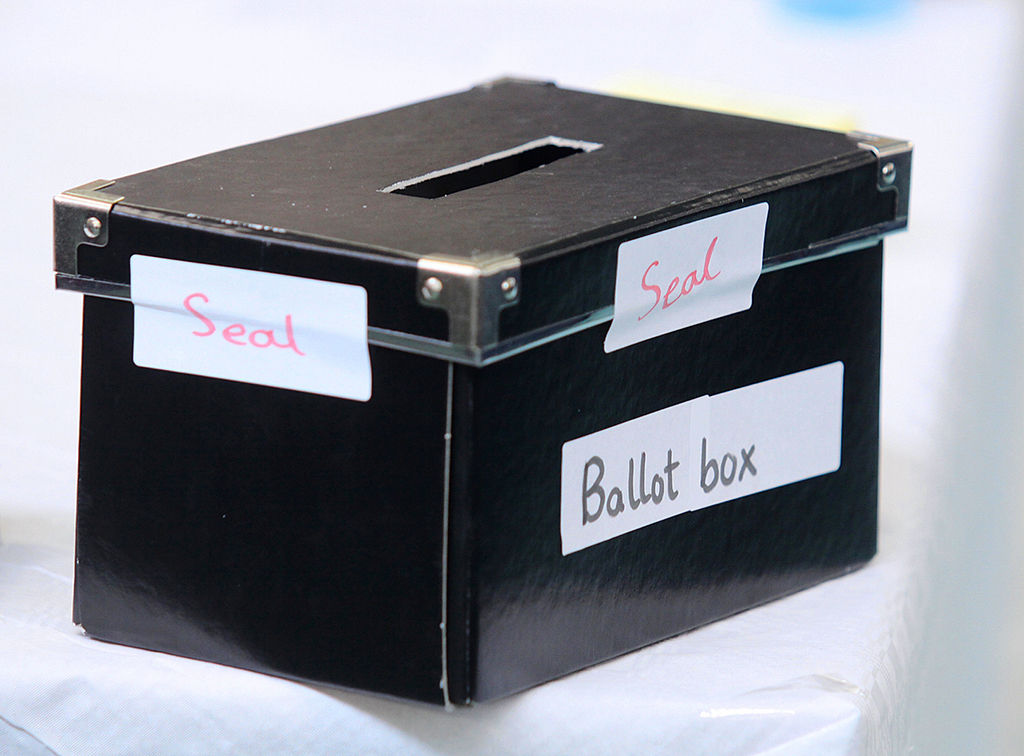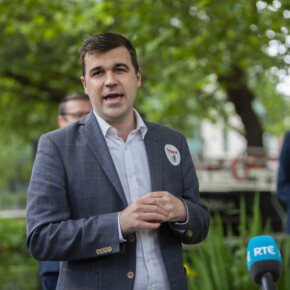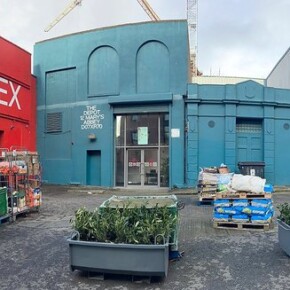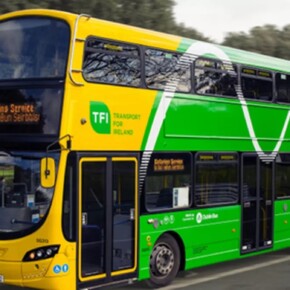Killiney-Shankhill is a mini general election
Mike Finnerty 05 Jun 2024
It all comes down to this.
15 candidates competing for seven seats.
If you’re a candidate in Killiney-Shankhill you have a 46.6% chance of getting elected.
Roughly half of the candidates will be hoisted onto the shoulders of strangers and have a bonfire at the crossroads (or is that just a rural Ireland election tradition?) while the other half will taste the bitter agony of defeat.
Legacies will be moulded with the stroke of pens while political careers will be ended in the same breath.
Killiney-Shankhill had the 2nd lowest turnout out of any Dún Laoghaire constituency in 2019; we had to write something a bit poetic to grab your attention.
7-seaters are specifically designed to make balding journalists tear what remains of their hair that bit quicker.
Killiney-Shankill, going off 2019 results, has a healthy mix of anti-government votes and pro-establishment votes.
2019 saw the Greens and Labour both get elected on the first count while People Before Profit nicked a seat.
On the other side of the fence, Fine Gael performed very strongly here (with now-Minister Jennifer Carroll MacNeill narrowly missing out on being elected on the first count) and were somewhat unlucky to get their third candidate Frank McNamara elected on the day.
If you want a preview of the next general election, Killiney-Shankhill should whet your appetite until our next trip to the polls.
The big question heading into June 7th is how much will the Green vote shrink compare to 2019, and who will benefit from it?
Lauren Tuite is in the hot seat for the Greens, and has wasted no time making her presence known to the public at large since being co-opted in January.
The Greens’ winning candidate in 2019, Una Power, scooped 16.6% of first preferences, yet in the same constituency Fianna Fáil got someone elected with 5.5% of first preferences.
In the unlikely event the Greens lose 10% of their 2019 vote share (and we say unlikely, because this is one of the strongest areas for the Greens) Tuite could still get elected.
Polling indicates that the Greens’ strong day at the polls from 2019 will not repeat itself and the party are on track to lose seats.
We have spent months teasing out who are the beneficiaries of the Green backlash and we have narrowed it down to Labour and the Soc Dems.
Labour have the home field advantage having gotten two candidates elected here in 2019.
2019’s transfers showed that after Power was elected on the first count, more of her surpluses were distributed to Labour’s Dennis O’Callaghan and those surpluses played a huge role in getting him elected.
If the same pattern repeats itself in 2024, it’s possible for Labour to get their two candidates elected.
Their victorious 2019 candidate, Carrie Smyth, is joined on the ballot by James Kearney.
Smyth is going for her 5th term on the council, while Kearney is a first-time candidate.
This blend of experience and youth makes Labour well-placed to have the last laugh come June 7th.
Before Labour kick their feet up and relax, they will have to contend with the Social Democrats making their debut in the area, Sinn Féin (who nearly got elected last time), People Before Profit, and an independent councillor who was initially elected as a member of People Before Profit.
The fight among progressive parties is more interesting to discuss and speculate than what will happen to the government parties; we know that Fine Gael will stroll home here.
Jim Gildea was successful in his 2019 election bid after missing out in 2014 and is a strong bet to keep his seat.
The aforementioned McNamara narrowly lost out in 2019 but was tapped by the party to succeed Jennifer Caroll MacNeill in 2020.
With the best part of four years under his belt and being fully aware of the rigours of campaigning, McNamara has a strong chance of winning the seat on his own terms.
Fine Gael’s third candidate, Jacqueline Burke, has a distinguished profile outside the world of politics.
An assistant professor of nursing at UCD, Burke has thrown her hat into the ring, saying she wants to improve local health services and education.
If Fine Gael could get three candidates elected here, it would be a sure sign that the Simon Harris train is picking up steam.
Fianna Fáil have opted to field just one candidate here; Sally Ann Moran.
Fianna Fáil running just one candidate after running two back in 2019 is food for thought.
Their successful candidate, Michael Clark, ended up getting over the line thanks to transfers from the other Fianna Fáil candidate Helena Kelly but without a second candidate it is difficult to tell where Fianna Fáil’s votes come from.
Of course, the last 5 years have seen Fianna Fáil and Fine Gael enjoy a stint in coalition instead of settling their differences with a fight in the Dáil car park, so maybe there is an appetite among the electorate to see Fianna Fáil and Fine Gael continue the coalition at a local level too.
Independents, who are the toughest to get information on, have been tipped to perform just as well if not better than the major parties on June 7th and the constituency already has an independent councillor.
The aforementioned Hugh Lewis (not to be confused with rock icon Huey) was elected as a People Before Profit candidate but switched to an independent in early 2021.
It should be worth noting that People Before Profit did run two candidates here in 2019 (with Lewis being the successful one) so the party running against a former winning candidate of theirs isn’t as bizarre as it seems (despite it backing up every joke you’ve ever heard about leftist infighting).
David O’Keefe is lining out for PBP on June 7th and boasts quite the CV: leading the fight against water charges in Dún Laoghaire (ask your parents, younger readers), taking part in the Repeal campaign in 2018, and more recently, working with Richard Boyd Barrett on protesting the ongoing war in Gaza.
Events in the Middle East have given PBP a bit of a boost when it seemed like they were down and out this time last year, but the presence of two similar candidates on the ballot could spread the progressive vote a bit thin.
There is a strong vote here for the party but it will be interesting to see if Lewis or O’Keefe will get the first preference from voters of that ilk.
The Social Democrats making their debut in Killiney-Shankhill is also likely to cause ructions.
Secondary school principal Lesley Byrne is on the ballot for the purple ones and there is no telling how they will do in this part of Dublin.
In recent months the party has made a point that they are more progressive than Sinn Féin and Labour on most issues, but the big question is will they be able to cut through the noise?
It could be merely enough to target Green voters from 2019 and that could be enough for the party but one also gets the impression they are circling Labour (as well as Sinn Féin, who we will get to in a minute).
The Soc Dems performed decently on Dún Laoghaire Council as a whole in 2019 but June 7th is their big test to see if they are going to become a major force on the centre-left.
Other independents in the race include Tracey Hennessy (classic local issues independent, which appears to be what voters are in the mood for right now), Susan Muldoon (apart from rhyming, has very little public information), Michael O’Doherty (simply listed as an “engineer” on the Council website,) and Fergus Power (has 20,000 Twitter followers but that has rarely translated into real world success).
Unlike other Dún Laoghaire constituencies, Sinn Féin actually performed decently here in 2019 with their candidate scooping 8% of first preferences.
On first preferences alone Sinn Féin would have won a seat but then the beauty of PRSTV kicked in.
8% is a solid base for Sinn Féin to expand on and will be running Roland Kennedy as their candidate.
Kennedy works as an organiser for the Forsa trade union which makes him the kind of Sinn Féin candidate you’d expect.
The trick for Sinn Féin will be to take advantage of the brewing cage match between the other progressive candidates and simply slip through the middle.
If Kennedy can make himself heard through the noise the seat is there for the taking.
2024 is very clearly Sinn Féin testing the waters with what they can achieve in Dún Laoghaire (unlike South Dublin County Council or Dublin City Council, there are no instances of running more than one candidate in the one constituency) so the party is playing it safe and seeing what the results bring.
Sinn Féin’s strategy of trying to win over Fianna Fáil and Fine Gael voters could work here, but that is a high-risk, high-reward strategy.
It is possible that Sinn Féin have sufficiently softened itself to make itself palpable for the average voter, but then that also runs the risk of having the party run out of town on a rail by parties to its left.
Killiney-Shankhill is a tightrope and there is only room for so many people before it snaps.
Let the circus begin.











